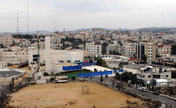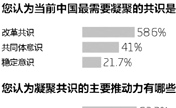

Located in a business street filled with stores and showcases in downtown city, a woodblock printing workshop seems strange and incongruous. Nearly ten persons are concentrated on carving or printing in semi-darkness in a 300-square meters semi-basement, regardless of the noisy and rush outside window. Among those, a middle age man with Chinese style dress is carving a wood plate of Buddhist figures under lamp. He is Wei Lizhong, founder and president of Shizhuzhai Print Art Corporation.
Related: Artist Zhu Kefeng and Mr. Iron Robot Theme Park in Jiaxing, E China
Sizhuzhai, literally means "Ten Bamboo Hall", was created in late Ming Dynasty (1368-1644) by Hu Zhengyan who is a great master of pictorial color woodblock printing in China. His virtuosity is still evinced at the present day by his two books, the 16-volume "Writings and Pictures of the Ten Bamboo Hall" and the 5-volume "Collection of Decorated Letter Paper of the Ten Bamboo Hall", which are regarded as the oldest east-Asiatic specimens extant of polychrome woodblock prints. Later, the prosperity of Shizhuzhai has gone and its special woodblock techniques have almost lost. Until in the 20th century, the books of Shizhuzhai were published again, but it is Wei Lizhong who revived the timehonored brand.
Wei Lizhong was born in 1968 in Shengzhou, east China's Zhejiang Province. In 1990, he was enrolled in China Academy of Art, one of China's top art colleges, and began his art career. Although his major was drawing, once learned about woodblock printing at a lesson, he was infatuated with it and decided to spend his life on it. In 2001, Wei Lizhong funded Shizhuzhai Print Art Corporation with all his savings, despite his whole family's opposition. In most people's eyes, woodblock printing cost much and gained less, but he has insisted in his work for more than 10 years. "The efficiency and output of woodblock printing cannot be compared with modern way, but its value and tradition is worth admiring and appreciating. This is the reason I insist till now." Different from oil on canvas, most Chinese tradition drawings are ink and wash painting on paper, so it is more difficult to duplicate Chinese paintings with woodblock printing.
Related: Chinese Pingtan artist Zhou Hong in Suzhou, E China
Thanks to historic accumulation of Zhizhuzhai and his Research, Wei dominated the perfect replication skills. At present, he is engaged in woodblock printing "Dwelling in the Fuchun Mountains", a great scroll painting made by Huang Gongwang of Yuan Dynasty (1271-1368). The huge project, with more than 1,000 pieces of wood plates and four years' work, is expected to be completed shortly. "The wood plates can only be used 200 or 300 times in printing, so the woodblock printing works are limited and valuable, can be considered as luxury." Wei Lizhong has just received an order from a club which want to purchase his duplicated paintings with price of 2,000 U.S. dollars each. He believes that the woodblock printing can not only be stored in museum, but also survive in the market.
 |
 Weekly review of military photos (2012.11.19-11.23)
Weekly review of military photos (2012.11.19-11.23) Veterans reluctant to leave the barrack
Veterans reluctant to leave the barrack Destroyer fleet in combat training
Destroyer fleet in combat training Remains of Arafat exhumed for poison tests
Remains of Arafat exhumed for poison tests Suspected part of F-16 washed ashore near Rafah
Suspected part of F-16 washed ashore near Rafah China launches new communication satellite
China launches new communication satellite Traffic accident injures 40 people in HK
Traffic accident injures 40 people in HK  Landscape of China on newly issued e-passport
Landscape of China on newly issued e-passport Aircraft guiding gestures inspire Chinese web craze
Aircraft guiding gestures inspire Chinese web craze Samsung's Galaxy Note 2 tops 5 mln mark
Samsung's Galaxy Note 2 tops 5 mln mark China stocks extend losses Tuesday
China stocks extend losses Tuesday  Two grizzly bears fight for salmon lunch
Two grizzly bears fight for salmon lunch  Gold armour hit Asian Fashion Week
Gold armour hit Asian Fashion Week  Political reform the only way to curb corruption
Political reform the only way to curb corruption 2012 National Geographic photo contest collection
2012 National Geographic photo contest collection